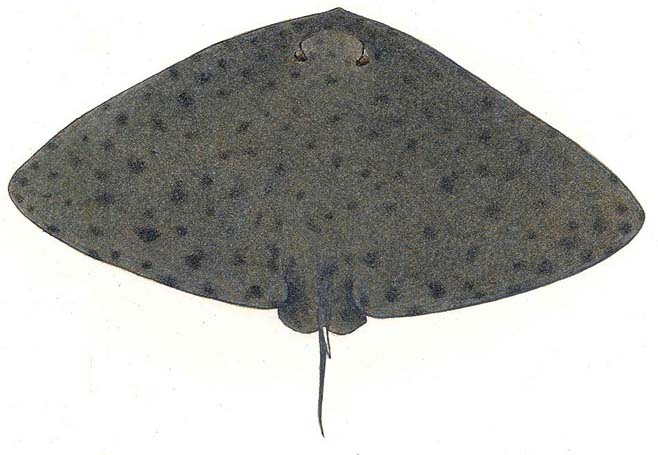|
Gymnura natalensis (Diamond ray)
(Gilchrist & Thompson, 1911)
Life
> Eukaryotes >
Opisthokonta
> Metazoa (animals) >
Bilateria >
Deuterostomia > Chordata >
Craniata > Vertebrata (vertebrates) > Gnathostomata (jawed
vertebrates) > Chondrichthyes > Elasmobranchii > Batoidei >
Myliobatoidei >
Gymnuridae
 |
|
Gymnura natalensis (Diamond ray) [Illustration
by Ann Hecht ©] |
Identification
The only ray in the area with a broad
diamond-shaped pectoral disk, almost twice as wide as long. Tail
with black and white bands and much shorter than body length,
tentacle present at rear edge of each spiracle, and a small sting
near tail base. Colour grey, green, or brownish above, often with
darker mottling, white below; can change upper color rapidly to
match substrate.
Size
To 2.5 m DW.
Range
Virtually the entire
area, from central Namibia to Mozambique. Endemic.
Habitat
Close
inshore off sandy beaches and in muddy estuaries to offshore banks
at 75 m depth.
Biology
Common. Feeds on flatfishes, sardines,
gurnards, crabs, mole crabs, and polychaete worms. Bears up to 10
young. Occurs singly or in large groups.
Human Impact
Popular with
anglers for its strong fight when hooked, often released; also
caught in the Natal anti-shark nets and by offshore trawlers.
Text by Leonard J.V. Compagno, David A. Ebert
and Malcolm J. Smale
|
